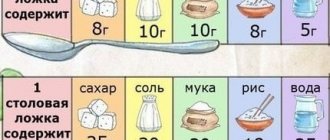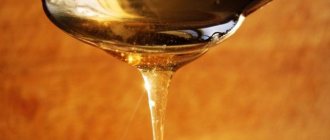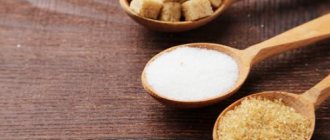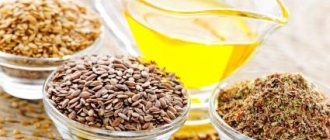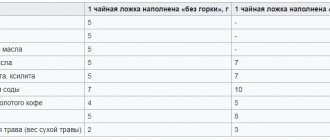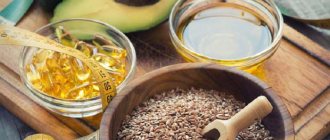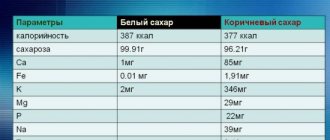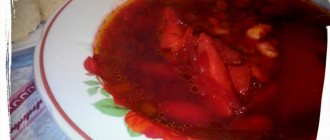Hello, today we will tell you about the calorie content of mayonnaise. Let's answer the question, how many calories are in 1 spoon of mayonnaise. Almost every person is worried about their figure, so it will be interesting for you to know the calorie content of one spoon of mayonnaise. In order to find out how many calories are in one or two spoons of mayonnaise. You need to know the weight of 1 spoon of mayonnaise. You can read this in our article, how many grams of mayonnaise are in a spoon.
Mayonnaise: product history
There are several theories as to when mayonnaise first appeared.
Mayonnaise, product history:
- According to one of them, this happened in 1758, during the siege of the Spanish island of Minorca.
- Due to the small number of products that were not supplied to the island for a long period of time due to hostilities, the chefs needed to come up with something new to diversify the menu. That's when the sauce came into being.
- The chefs decided to mix olive oil with lemon juice, eggs and spices. As a result, an interesting sauce appeared that can be safely spread on bread. The soldiers enjoyed this dish with pleasure.
- Some scientists believe that a similar sauce could have been prepared much earlier, in France, Spain or Italy. After all, it is in these regions that there is a large amount of olive oil and eggs. There is an opinion that this sauce is a relative of the Spanish dish, which was prepared by mixing eggs with vegetable oil and garlic.
Sauce
Mayonnaise: benefits and harms
Recently, nutritionists have sounded the alarm, because the amount of mayonnaise consumed by the average person is constantly growing. This cannot but cause concern, since the calorie content of this product is high, which negatively affects health and leads to obesity.
Mayonnaise, benefits and harm:
- Due to the presence of a large amount of fat and additional ingredients, the concentration of cholesterol increases, which increases the risk of atherosclerosis and thrombosis. Of course, the most useful is homemade mayonnaise, which is made by mixing refined vegetable oil with eggs, mustard, and vinegar.
- However, the modern rhythm of life does not allow housewives to prepare homemade mayonnaise. It is easier to purchase the product on the store shelf. Unfortunately, it is not as beneficial as a natural product, because it contains ingredients that reduce the cost of production. Instead of eggs, egg powder is used, and to reduce calorie content and reduce the amount of vegetable oil, stabilizers and emulsifiers are introduced.
- They allow the emulsion not to separate. Oil and water normally separate in a mixture and do not mix well.
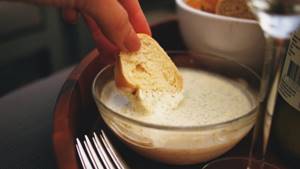
Snack
How many calories are in Provencal mayonnaise?
For the first time, this sauce appeared on store shelves in our country under the name Provencal. Its recipe is significantly different from classic mayonnaise, since it contains not only the main ingredients, but also mustard.
How many calories are in Provencal mayonnaise:
- This gives the seasoning a spicy flavor. It can be enhanced with horseradish or capers. Recently they have also begun to experiment with the addition of wasabi and a variety of hot peppers.
- Provencal goes well with salads, so in Soviet times it was often used to flavor Olivier, Mimosa, and classic salads of that time.
- The calorie content of Provencal mayonnaise is 620 kilocalories per 100 grams. However, this value can also fluctuate depending on the manufacturer. This is due to some subtleties in the production of products.
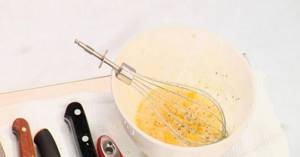
Preparing the sauce
Vitamin content
Table 1
| Vitamins | Content | Daily norm |
| A (retinol) | 20 mcg | 2 % |
| E (α-, β-, γ-tocopherols) | 30 mg | 300 % |
| B1 (thiamine) | 0.01 mg | 0.67 % |
| B2 (riboflavin) | 0.05 mg | 2.78 % |
| B3 (PP) (nicotinamide) | 0.5 mg | 2.63 % |
| B4 (choline) | 14.34 mg | 2.87 % |
| B6 (pyridoxine) | 0.01 mcg | 0.5 % |
Provencal mayonnaise contains vitamins with high and low levels, if we consider them according to the approved standards for the significance of the nutritional value of the product.
At the highest level of importance in the food value chain is vitamin E, which keeps the muscular system in good shape.
Vitamins of low content include:
- A, takes part in all functions of the body related to its growth and proper metabolism, preserves the structure of the cornea of the eye.
- B1, required to normalize the nervous and muscular systems.
- B2, maintains body tone.
- PP, participates in the formation of hemoglobin.
- B4, is involved in the biosynthesis of heme and proteins, cell proliferation, and tissue respiration.
- B6, participates in the metabolism of lipids and amino acids.
Light mayonnaise: calorie content per 100 grams
Girls who watch their diet prefer low-calorie products, mayonnaise is no exception. The whole problem is that low-calorie does not mean healthy.
Light mayonnaise, calorie content per 100 grams:
- To ensure that mayonnaise has a light texture and does not separate into components, an emulsifier, starch and stabilizer are added to its composition. This makes the product harmful. Some vegetable oil is replaced with trans fats.
- The result is a harmful product that has a negative impact on health. If you want to lose weight, never use low-calorie mayonnaise. Try to avoid this product and replace it with yogurt or sour cream.
- The calorie content of light mayonnaise may vary depending on the percentage of fat. Manufacturers usually produce a product with a fat content of 15-30%. The higher the fat percentage, the more calories the product contains. On average, the calorie content of such a product ranges from 220-320 calories per 100 g. Remember that the calorie content of sour cream is 260-280 kcal per 100 g. The number of calories in these products is approximately the same, but the benefits of sour cream are much greater.
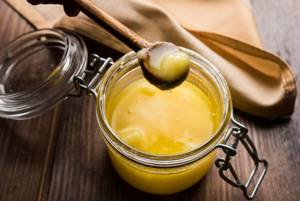
Home
Proteins fats carbohydrates
People who watch their diet pay great attention to indicators such as proteins, fats and carbohydrates. The body needs to receive the required amount of proteins because all internal human organs, muscles, hormonal, circulatory and immune systems consist of them. Fats help with hormone synthesis, skin regeneration and protect internal organs. But carbohydrates are a source of minerals, vitamins and fiber, and they also help the normal functioning of our brain. This is why it is so important to know the amount of proteins, carbohydrates and fats in foods. Let's take a closer look at the amount of proteins, fats and carbohydrates in different types of mayonnaise:
| Type of sauce | ||||||
| Classical | Easy | Provencal | Olive | Soy | Home | |
| Squirrels | 2.5 g | 0.8 g | 3.1 g | 3 g | 1.7 g | 10.4 g |
| Fats | 68 g | 25 g | 67 g | 67 g | 47 g | 24.9 g |
| Carbohydrates | 4 g | 6.5 g | 2.6 g | 2.8 g | 3.5 g | 2.2 g |
When choosing sauce for your favorite dishes, remember that they not only have different energy values, but the amount of proteins, carbohydrates and fats, which also affects your body.
Calorie content of homemade mayonnaise per 100 grams
At home, mayonnaise is prepared from vegetable oil, mustard and egg yolks. Lemon juice and spices can also be added.
Calorie content of homemade mayonnaise per 100 grams:
- Oddly enough, the calorie content of this product is slightly lower than that of the classic Provencal, which can be purchased in the store. In production conditions, egg yolks are replaced with powder.
- Therefore, when preparing food, much more vegetable oil is spent than at home. At the same time, the calorie content of homemade sauce is 570 kilocalories per 100 g.
- Despite the high fat content, which is 55-60%, the homemade product is much healthier than the store-bought, low-calorie and light one. This is due to the absence of trans fats, thickeners, and stabilizers.
The main disadvantage of homemade mayonnaise is its short shelf life. On average it is about two days. During long-term storage, even in the refrigerator, the ingredients may separate. The egg can sink down, but the sunflower oil can float. Thus, the product changes its consistency. However, to restore the product, under no circumstances should you beat it again; it is better to throw it away. After all, eggs without shells do not last long and spoil very quickly. To extend the shelf life of the product, manufacturers introduce stabilizers, emulsifiers and preservatives. If you are preparing the sauce at home for one time to season a salad or flavor some dish, there is no need to introduce starch or stabilizers.
Sauce
Application
Provencal mayonnaise is eaten with almost all dishes. The most common use is as a dressing for various salads, as well as a sauce for meat, fish and vegetable dishes.
Market Analytics
- Black Lives Matter movement: reaction and consequences for the beauty industry
- COVID-19 is changing the rules of the game in the cosmetics market
- Beauty of the future: cosmetic innovations 2021
Convenient search for beauty salons on our website
Beauty salons in Moscow Beauty salons in St. Petersburg Beauty salons in Ekaterinburg Beauty salons in Novosibirsk
Latest blog posts on our website
- Naturecream / Tremella Extract - Snow Mushroom Detox for Skin
- Prostye-sovety / How to visually enlarge your lips with makeup
- Naturecream / Apricot kernel oil for face
- Naturecream / MATRIXYL3000 - the best skin elasticity stimulator
- Naturecream / SPF in Natural Oils
- Naturecream / Geranium (Pelargonium) oil for skin health and beauty
- Prostye-sovety / Save on a beauty salon: procedures that can be done at home
- Naturecream / Growth Factor - brings back youth?
- Oksana-Lezina / 3 effective abdominal exercises from a fitness instructor for beginners
- Prostye-sovety / Making perfect curls at home
Latest forum topics on our website
- Natalya / How to properly make a gelatin mask?
- Mrs._Smith / Badly sunburned! What to do?((
- Ice / Is it necessary to combine fitness classes with a diet?
- Antonova / What can be used for hair loss?
- Radio operatorKat / Who was on a protein diet?
Other articles in this section
| Sea salt Modern scientific research has proven that it was in the sea water of the World Ocean that life first originated. It turns out that the composition of the blood of many animals is very similar to the composition of sea water. This allows us to conclude that sea salt is a symbol of life and health. |
| Salt Salt (sodium chloride (NaCl), sometimes table salt, table salt, rock salt) is a white mineral, highly soluble in water. Salt is quite often found in nature in the form of crystals of different textures and sizes (large and small). It is one of the minerals that people eat. The human body has a need for salt, but its large consumption causes quite a lot of diseases and complications in the body. |
| Raw sugar Raw sugar is a unique, incompletely processed, easily digestible food product. It tastes sweet, most often of cane origin, less often made from sugar beets, as it has an unpleasant aftertaste and lower content of microelements. Available in light brown, gray and white colors. |
| Ground black pepper is the most revered and sought after spice in the world. It has long grown exclusively in India and Greece, where it was especially in demand and loved. In ancient times, pepper did not serve only as a seasoning, but was used as money. In Ancient India it was sacred, and the ancient Greeks appeased the Gods with it. One of the reasons to use ground pepper in cooking is its ability to freshen a dish and give it a special spice and aroma. |
| Rosemary Rosemary is a perennial evergreen shrub. Belongs to the Yasnotkov family. Quite common in Europe and the Mediterranean. Translated from Latin, its name sounds like “sea dew.” The needle-like shape of the leaves and lemon-pine scent make rosemary resemble coniferous plants. |
| Dried basil Basil is a spicy aromatic seasoning, known since ancient times and coming to us from eastern countries. In India, basil was revered as a sacred plant and was called the favorite plant of Vishnu. Hindus believed that basil bestowed divine power, and the inhabitants of Ancient Rome believed in its ability to bring wealth and prosperity to the home. Basil was brought to Europe in the middle of the 4th century and quickly spread throughout the Mediterranean. |
| Apple cider vinegar 3% Apple cider vinegar is vinegar obtained by fermenting raw materials from apples. Moreover, it has a richer taste than alcohol. Apple cider vinegar is mild in taste and aromatic. |
| Fresh basil Basil is known to many as a culinary seasoning. Possessing a special aroma, this spice has found reverence in the cuisines of Central Asian countries, as well as in Western Europe. There are a large number of varieties of this plant, each of which has its own subtle aroma - from rich clove to light peppery aroma. |
| Ketchup It is believed that ketchup was first prepared in China. And it first came to Europe only in the 17th century. Then it was little similar to the modern analogue of this sauce - it included mushrooms, beans, walnuts, garlic and wine. The main ingredient that now ranks first when making ketchup - tomatoes - was not part of the first ketchup made. In Europe, this sauce quickly took root and became widespread. The classic recipe for ketchup with tomatoes appeared only at the beginning of the 19th century in culinary notes and recipes of American housewives. |
| Jasmine Jasmine (Latin name: Jasmнnum) is a member of the olive family (Oleaceae). A close relative of lilac and ash. It is a low (no more than 2 m in height) evergreen shrub that sheds its leaves, growing in warm climates. In Russia, jasmine is found only in Crimea and the Caucasus. In the temperate zone, in dachas, it is not jasmine that grows at all, but mock orange from the hydrangea family, characterized by a richly sweet aroma of flowers. This feature is also characteristic of jasmine. Its flowers differ from lilacs in having 5 petals and they bloom at night. It is during this period or early in the morning that they are collected. |
European mayonnaise - calories per 100 grams
European mayonnaise is a new product that appeared on store shelves not so long ago. Many people have a question about how Provencal or Provencal differs from the standard sauce.
European mayonnaise, calorie content per 100 grams:
- It contains more fat, the percentage is 72%. This is a fairly high figure, which significantly affects the calorie content of the product.
- 100 g contains 700 kilocalories. However, the differences are not only in the high fat content. The mayonnaise, which was made in Spain, was flavored with sugar.
- In Europe, mayonnaise is made sweeter than the usual Provencal. There is no mustard in it, because mustard is not added to the standard sauce.
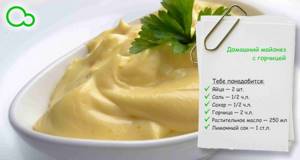
Homemade sauce recipe
How many calories are in 1 teaspoon of mayonnaise?
Many scientists believe that a wrong opinion has now been formed about mayonnaise, because almost all nutritionists believe that it is one of the most harmful products, which contains a huge amount of cholesterol and has a negative effect on health. In the course of research, it was found that not only the presence of mayonnaise in the diet is important, but also its quantity. If you season your salad with a teaspoon of this product, nothing bad will happen. The main thing is to eat a moderate amount of fatty foods. The diet should be based on fresh vegetables, dairy products and a small amount of lean meat.
How many calories are in 1 teaspoon of mayonnaise:
- The parameter depends on the fat content and constituent components.
- If it is Provencal, with a fat content of 67%, then the calorie content will be 50 kcal.
- If this is a low-calorie product, then 10 g contains 25 kcal.

Refueling
Calorie content of mayonnaise sauce
Girls who watch their diet tend to choose products labeled “Fitness” or with the lowest fat content. Manufacturers have seen this trend, so on the shelves you can find products labeled Fitness, or mayonnaise sauce.
Calorie content of mayonnaise sauce:
- Many people wonder how this product differs from classic mayonnaise and whether there is a difference in calorie content. Mayonnaise sauce is a product whose consistency may be thinner than classic Provencal, but the manufacturer is not required to include egg yolks in the composition.
- Most often, the fat content of mayonnaise sauce ranges from 15-30%. According to GOST, a product that contains less than 30% fat cannot be called mayonnaise.
- It must be marked “Sauce”. If your goal is to lose weight and want to purchase a low-calorie product, pay attention to the product marked “Sauce.”
- The calorie content of such a product is 150-280 kcal per 100 g.
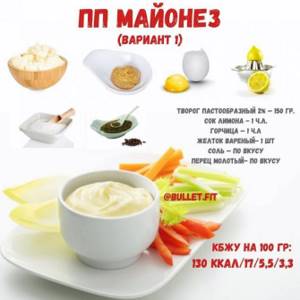
Mayonnaise on PP
We will also tell you about calorie content:
- Cilantros
- Beer
- Cheremshi
- Lavash
- Pumpkins
Store-bought mayonnaise contains a large number of flavorings, preservatives, and flavor enhancers, which also makes the product harmful and unsuitable for children. Due to the presence of a large amount of fat, the product is high in calories.
Dietary properties:
What is the calorie content of mayonnaise, what dietary properties does it have? All this is of interest to those who lead a healthy lifestyle and monitor their health and figure. So we will try to answer these questions in the next article.
So here it is:
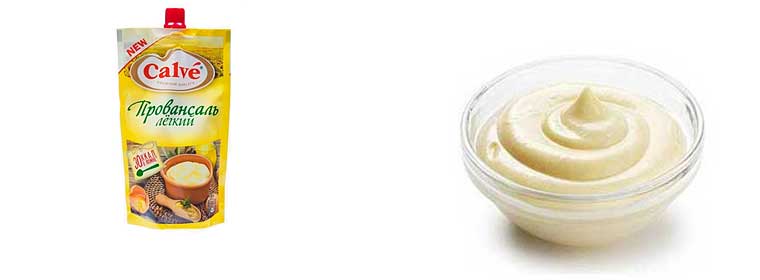
It is necessary to take into account that a product prepared industrially is only a flavoring additive to food, so its beneficial properties will not be great, regardless of the variety or brand of the manufacturer.
Much is determined by the integrity of the manufacturer and the ingredients used in the preparation (ideally, they should be natural).
The main ingredients of mayonnaise are vegetable oil and egg yolk.
For example, eggs contain a very useful protein for the human body - albumin. Chicken egg yolk is a rich source of choline, which is an essential component of the B-vitamin complex.
Vegetable oil mainly gives mayonnaise its beneficial properties. Oil is a source of vitamins E and F. Vitamin E makes the body more resistant to aggressive external factors. Vitamin F improves metabolic processes. In addition, vegetable oil promotes the absorption of vitamin A, which inhibits the aging of the body.

